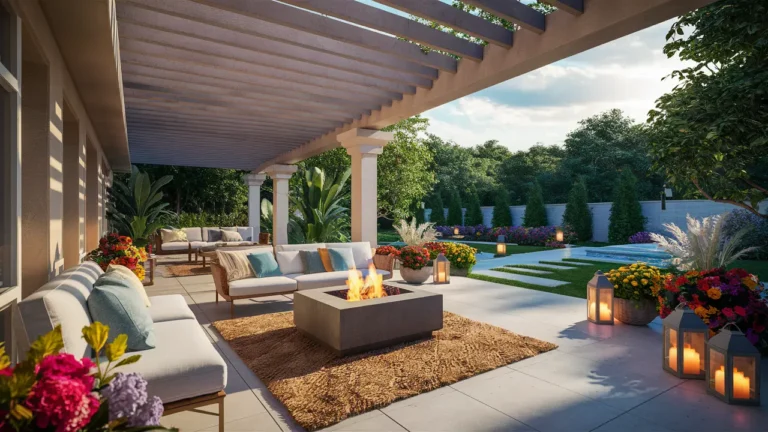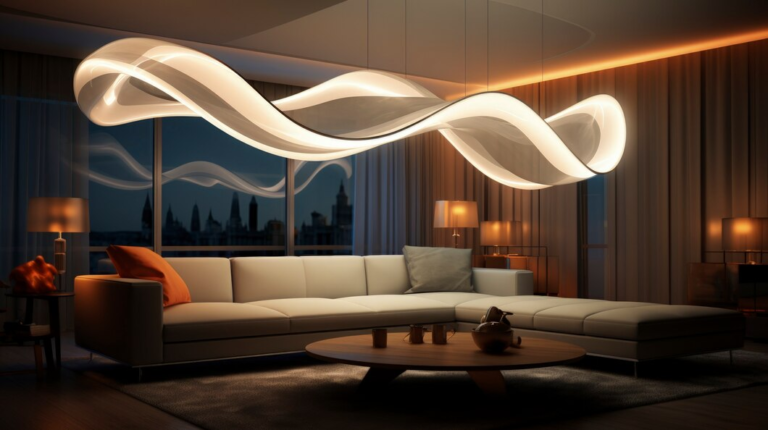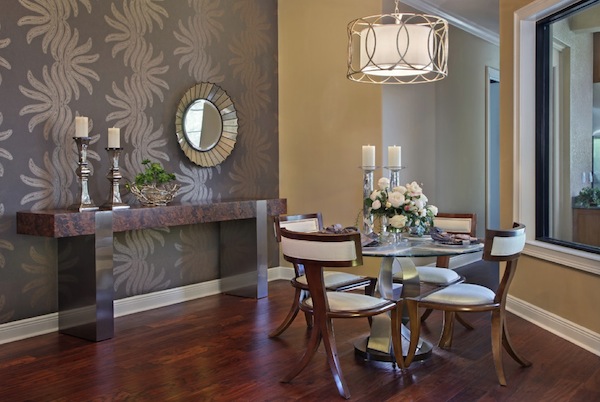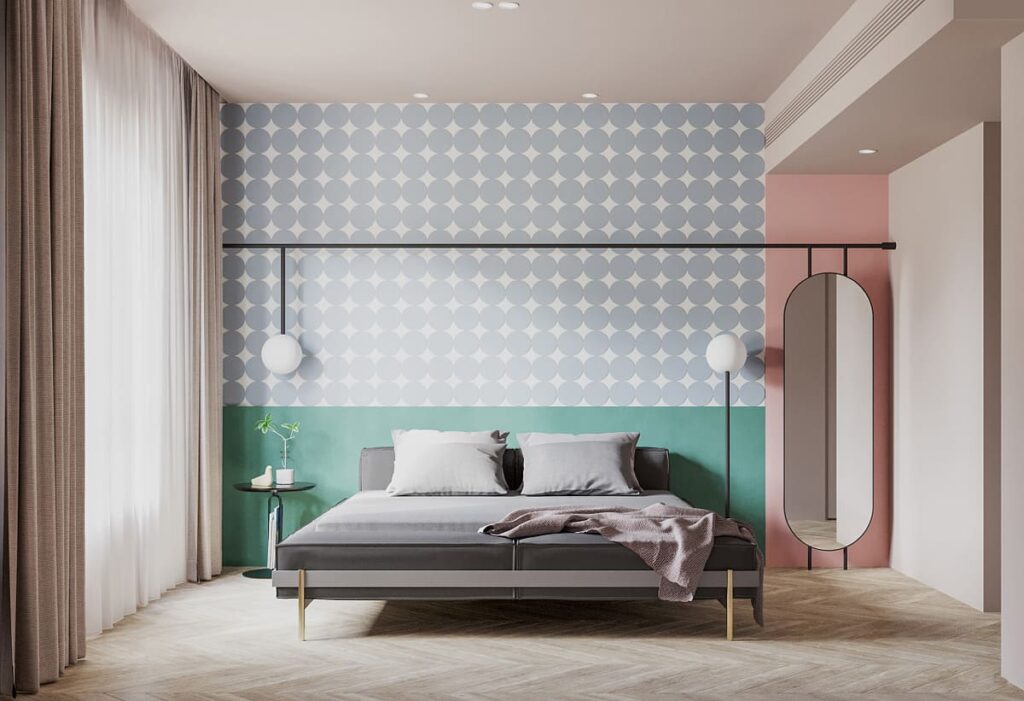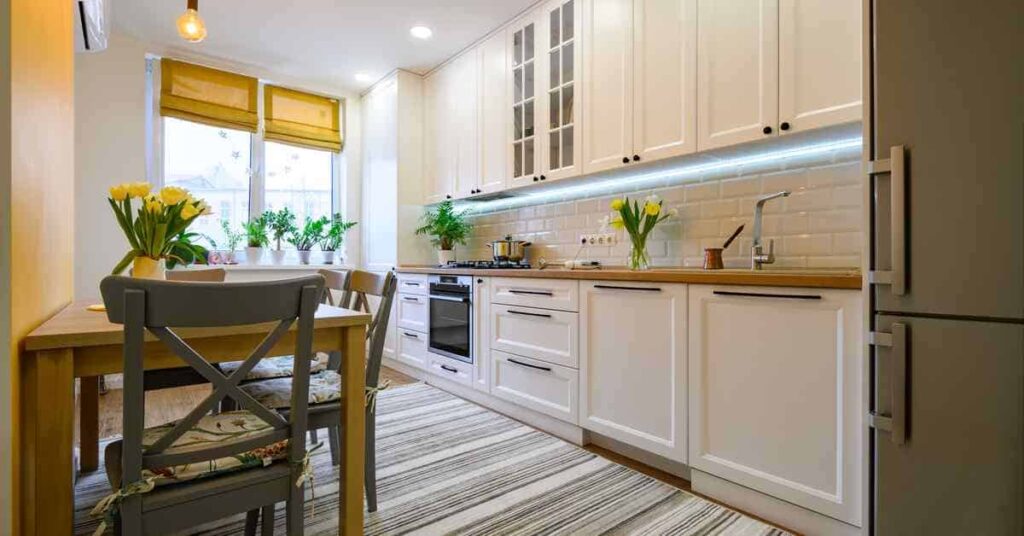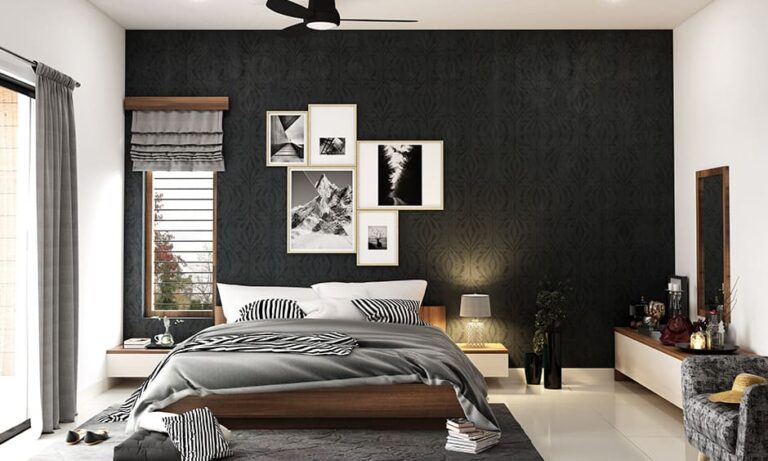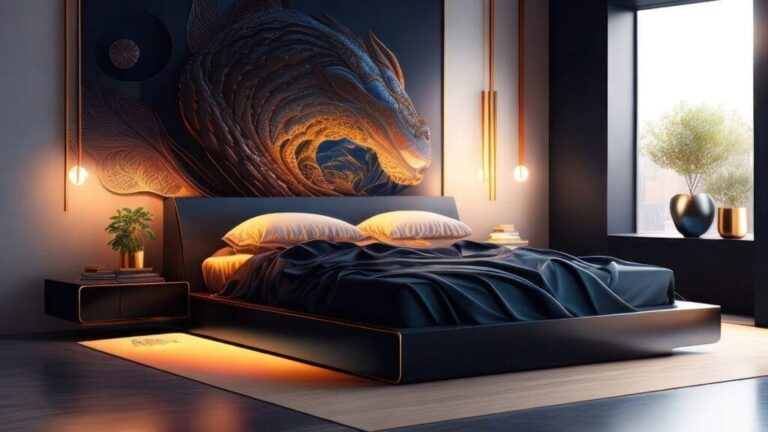An accent wall in the dining room not only adds visual interest but also sets the tone for the entire space. It can transform the dining area from a simple place to eat into a stylish room that enhances every meal. Choosing the right color for your accent wall is key to creating the desired atmosphere. Here’s how to select the perfect shade to complement your dining room’s decor and style.
Understand Color Psychology
Color has the power to influence mood and perception—understanding this can help you choose a wall color that will enhance your dining experience. Here’s a quick guide:
- Red: Known to stimulate appetite and conversation, red is a popular choice for dining rooms. However, it’s vibrant and can dominate, so use it cautiously.
- Blue: While often avoided in dining areas due to its appetite-suppressing qualities, blue can create a calm and serene environment. Lighter blues work well in casual, airy dining spaces.
- Green: Associated with health and tranquility, green is an excellent choice for creating a soothing dining atmosphere. It works well in natural-themed interiors.
- Yellow: Bright and cheerful, yellow can energize a dining space and is perfect for creating a welcoming and cozy environment.
- Neutral Tones: Grays, beiges, and off-whites offer versatility and sophistication, allowing your furnishings and table settings to take center stage.
Consider the Existing Decor
Your dining room’s current style and decor should guide your choice of accent wall color:
- Furniture: Consider the color and style of your dining table and chairs. Dark wood furniture pairs well with rich, deep colors like navy or burgundy, while lighter woods or modern furniture might suit bold and bright or soft pastel walls.
- Artwork and Accessories: Think about the colors in your dining room’s artwork, rugs, curtains, and other accessories. Choose a wall color that complements these elements to create a cohesive look.
Test Colors in Your Space
Lighting can dramatically affect how a paint color looks in your room:
- Natural Light: Observe how different colors look throughout the day as natural light changes. Rooms with plenty of sunlight can handle darker or more vibrant colors.
- Artificial Lighting: Consider the type of bulbs used in your dining room (LED, incandescent, halogen) as these can shift the appearance of paint colors. Warmer lights complement warm colors, while cooler lights enhance blues and greens.
Sample Paint Before Committing
Before making a final decision, it’s wise to sample your chosen colors:
- Paint Swatches: Apply large swatches of potential colors directly to the wall or on large boards that you can move around the room at different times of the day.
- Live with It: Spend a few days observing how the color feels in the space during different lighting conditions and alongside your furniture and decor.
Create Balance
When your accent wall is bold or dark, balance the rest of the room with lighter or neutral tones to avoid overwhelming the space. If you opt for a lighter accent color, consider deeper shades for furnishings or textiles to create a dynamic contrast.
Conclusion
Choosing the perfect accent wall color for your dining room involves understanding the effects of color, considering the existing room elements, and experimenting with potential choices. With thoughtful selection, your accent wall will enhance the dining experience by adding depth and character to the space, making it a place where meals and memories are enjoyed in style.



